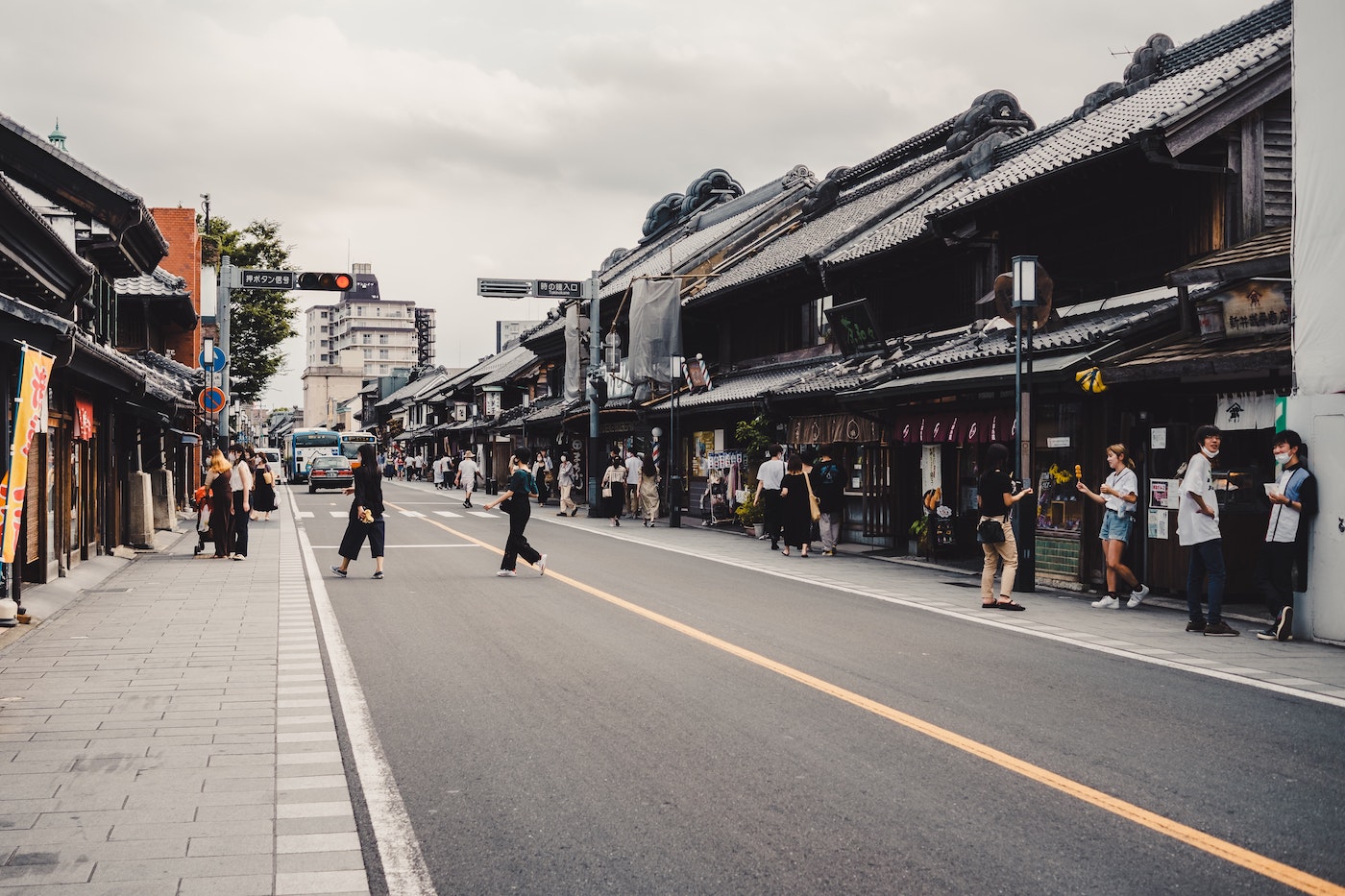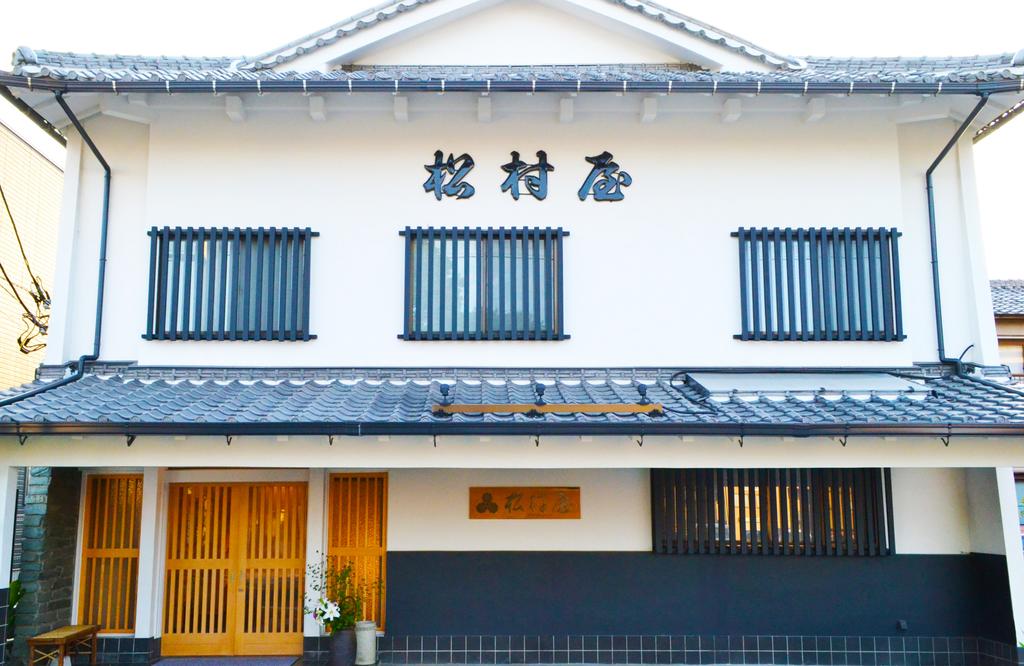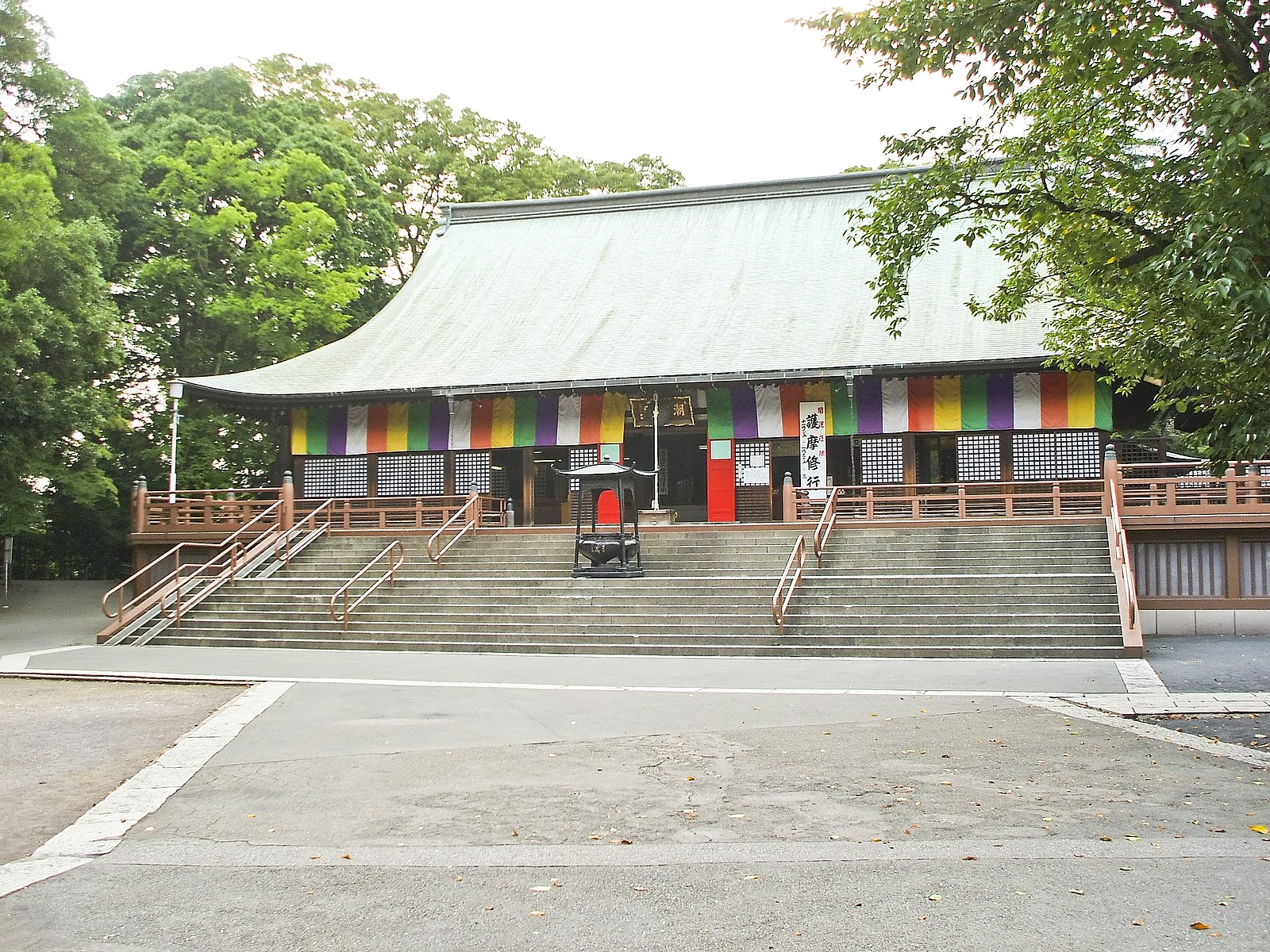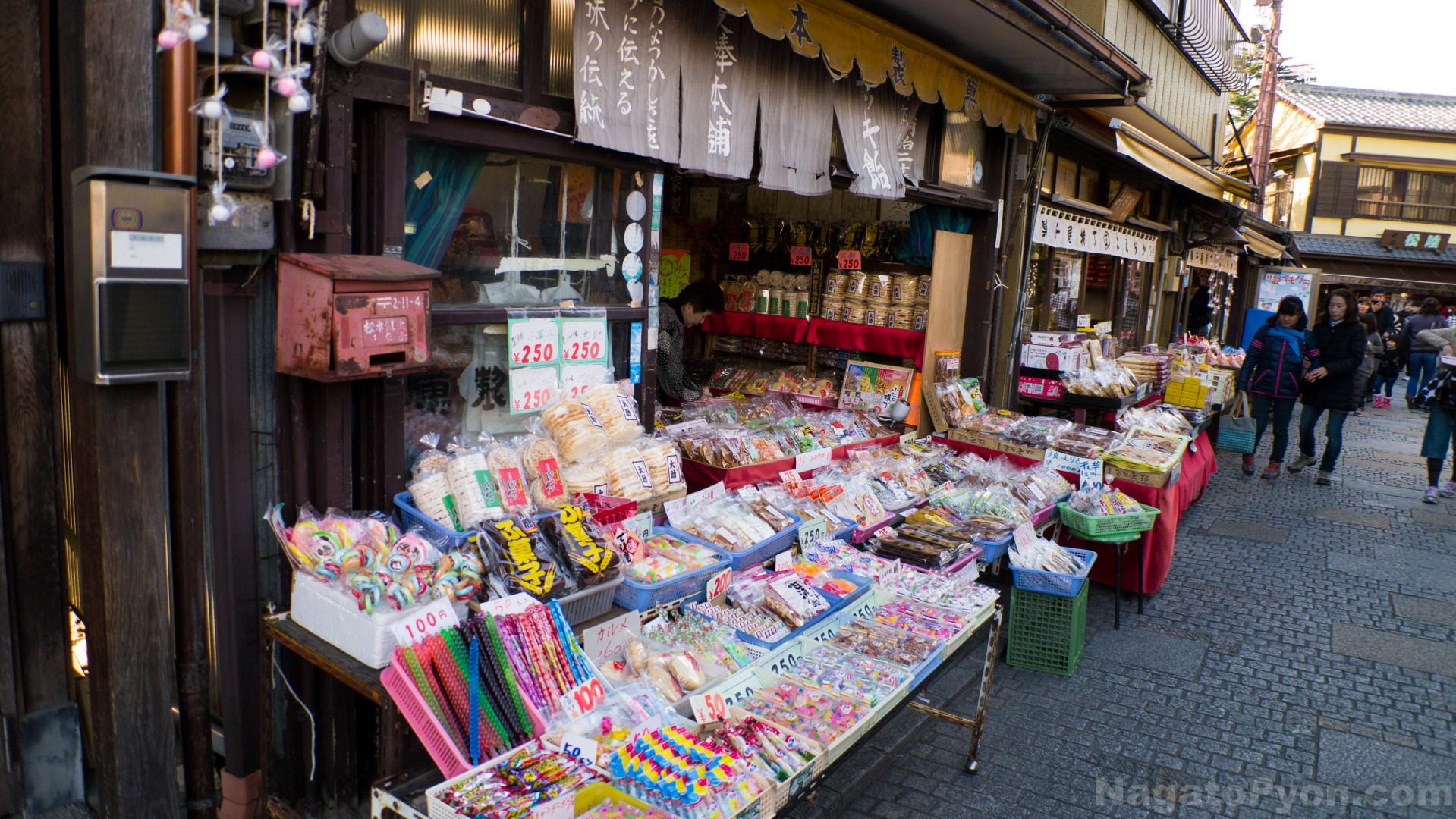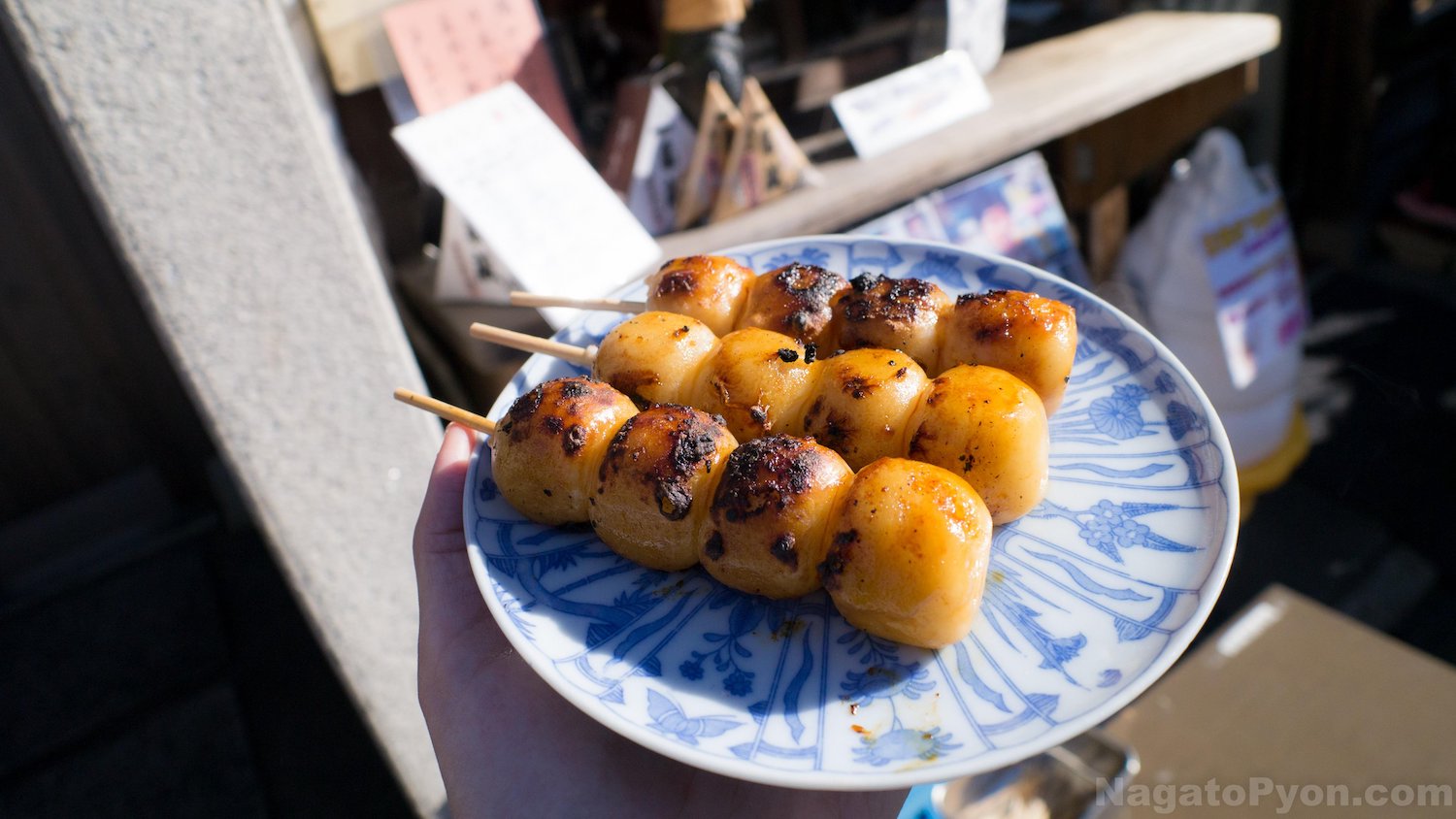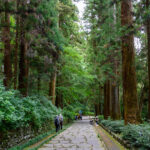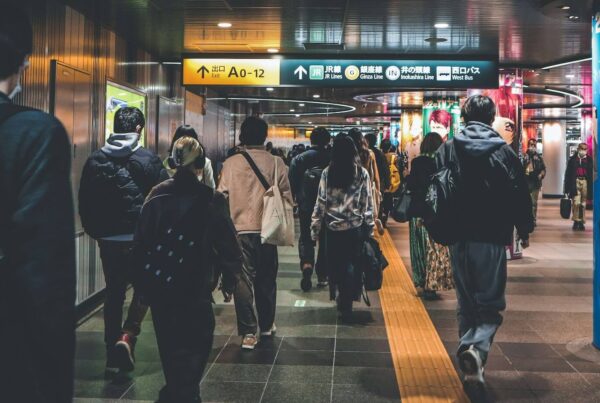Located only 30 minutes from central Tokyo is Kawagoe, in Saitama Prefecture, a charming town famous for its little Edo district, which is known as ‘Koedo’. ’Part of the town is lined with many Edo-style buildings and shops, here you can visit and experience a part of Japan which you won’t see in Tokyo. With many sights in the area, it is a popular day trip from Tokyo, especially on weekends.
Table of Contents
How to get to Kawagoe from Tokyo?
Kawagoe is located in northwestern Saitama, conveniently located only a short distance from central Tokyo and connected by three railway companies.

Hon Kawagoe Station (Credit: japanvisitor.com)
From Ikebukuro to Kawagoe and Kawagoe-shi Stations take the Tobu Tojo Line
- Journey time: 30 mins by express train
- Price: ¥480
From Seibu-Shinjuku to Hon-Kawagoe Station take the Seibu Shinjuku Line
- Journey time 50-60 mins
- Price: ¥510
- There are also 1-2 limited express trains an hour that takes 45 mins and cost ¥1010
From JR Shinjuku Station to Kawagoe station take the JR Saikyo/Kawagoe line
- Journey time: 55 mins
- Price: ¥770
- The trip is fully covered by the JR pass
If you are travelling from Ikebukuro it is a good idea to get the “Kawagoe Discount Pass” which allows visitors to travel between Ikebukuro and Kawagoe for only ¥710. It is only valid for one day and can be purchased at Ikebukuro station.
Places to stay in Kawagoe
From traditional ryokans to more modern western-style hotels, there are many good hotels to stay in Kawagoe. Here are 3 affordable places to try on your next trip.
Ryokan Matsumuraya
Why guests love it: A traditional Japanese Ryokan located just a stone’s throw from Kashiya Yokocho Alley, making it an ideal place for visitors to stay, especially those on a budget. The ryokan is a traditional design with black ceramic tile roofs and wooden panels across its windows. The guest-rooms also has a simple unassuming charm to them, with tatami-lined flooring and unvarnished wood beams. Guests can change into a yukata and enjoy a relaxing bath.
- Credit: Booking.com
- Credit: Booking.com
- Credit: Booking.com
Address: 350-0062 埼玉県川越市元町1丁目1−11
Prices: start from ¥4,080 per person for a single room with a shared bathroom as well as breakfast. For ¥9,100 breakfast and dinner is included as well as amenities in your room.
Kawagoe Prince Hotel
Why guests love it: Located just a few minutes walk from Honkawagoe station, the Kawagoe Prince Hotel offers great value for money. This 3-star hotel is clean and spacious. There is also an onsite beauty parlour as well as a souvenir shop conveniently located in the lobby.
Address: 〒350-8501 埼玉県川越市新富町1丁目22
Prices: ¥9301 per night (Breakfast included).
Kawagoe Tobu Hotel
Why guests love it: Conveniently located next to the station and not too far from the historic centre, the Kawagoe Tobu Hotel is ideal for a short stay. Rooms are clean and spacious and fitted with all the expected amenities. Guests also love the friendly service of the staff.
Address: 〒350-1123 埼玉県川越市脇田本町8−1
Prices range: from ¥7,500-¥12,900 for 1 double be room.
Best things to do in Kawagoe
Kurazukuri Street
Kurazukuri street or warehouse district, is Kawagoe’s most iconic street, providing visitors with a nostalgic scene from the Edo period. The area was once a thriving commercial town supplying many resources to Edo (present-day Tokyo).
The streets are lined with many wooden warehouse buildings from that era, making you feel as if you have stepped back in time. These buildings are characterised by steep tiles and clay walls, which were greatly needed after a fire wiped out much of the area in 1893.
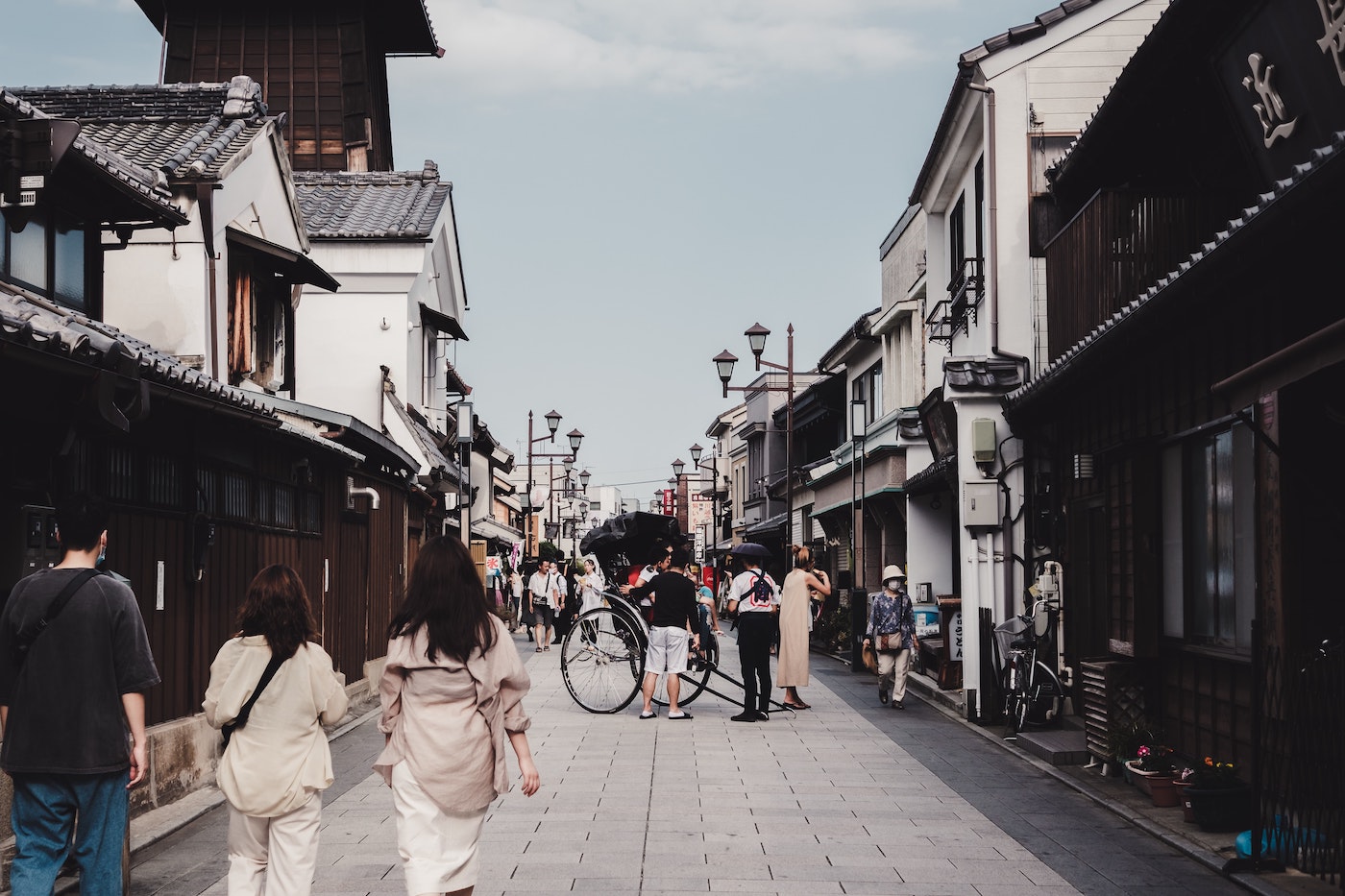 Today Kurazukuri Street has more than 200 of these Kurazukuri houses, with many of these converted into restaurants and souvenir shops, selling traditional arts and crafts.
Today Kurazukuri Street has more than 200 of these Kurazukuri houses, with many of these converted into restaurants and souvenir shops, selling traditional arts and crafts.
One of the houses which is open to the public is the Museum of Kurazukuri (currently closed for renovation), a museum dedicated to the history of the area. The museum is housed in what used to be a tobacco wholesaler’s shop. Visitors have the chance to get to see what a Kurazukuri building looks like inside. Some of the exhibits include traditional machines and other objects used in everyday life during this era.
Address: 350-0063 Saitama, Kawagoe, Saiwaicho, 7−9
Price: ¥600 (includes admission to Honmaru Goten, city museum and art museum)
Opening times: 09:30-18:30 (17:30 from October to March)
Honmaru Goten
Honmaru Goten, which translates as the ‘palace in the inner-most circle of defence’ is the only surviving building of the former Kawagoe Castle, which served as the lord’s residence and offices. The current structure was added in 1848, and covers around a third of the original castle grounds.
Visitors can enter the Goten, which is preserved as a museum displaying life in this castle residence, including tatami rooms, a garden as well as many pictures and artefacts on display. Visitors are also able to sit with a model feudal lord and his subordinates and imagine what it was like to hold a meeting in that very room.
Address: 350-0053 埼玉県川越市郭町2−13-1
Opening Hours: 9am – 5pm, last entry 4.30pm. Close on Mondays
Admission: ¥100
Kitain Temple
There are many temples and shrines worth visiting in Kawagoe, most notably Kitain Temple. Built over 1,200 years ago the temple has played a significant role during the rule of the Tokugawa shogunate. The temple used to be part of a large complex which was believed to have healing powers. Jie Daishi, one of the head priests enshrined here, was believed to have magical powers to ward off evil. Worshipers visit the temple in order to pray for protection.
- Credit: Wikimedia commons
- Credit: w00kie(https://www.flickr.com/photos/w00kie/)
One of the highlights of the temple is in one of the rooms, where it is believed the shogun Iematsu was born. The room is decorated with a floral ceiling design and a set of a general’s armour. Another highlight is the Gohyaku Rakan statues, 540 stone statues of the disciples of Buddha, each with their own individual facial expression. They are located in a separate courtyard from the main temple grounds.
Address: 350-0036 Saitama, Kawagoe, Kosenbamachi, 1 Chome−20−1
Opening Hours: 8:50 to 16:30 (until 16:00 from November 24 through February)
Admission: ¥400
Kashiya Yokocho Alley
Near Kurazukuri Street is Kashiya Yokocho Alley, or Candy Alley, a little shopping street lined by stores selling traditional Japanese sweets and cakes. In the early Showa period, a sugar shortage in Tokyo following the Great Earthquake of 1923 led to a surge in business for the sweet-makers, with as many as 70 shops existing along the street, today, over 20 of these shops still remain.
- Credit: nagatopyon.com
- Credit: nagatopyon.com
- Credit: nagatopyon.com
For those with a sweet tooth it is a great place to explore and try new treats, with many old fashioned style sweets available. Among the sweets that you can find here are an assortment of candies, Japanese rice crackers, ice cream, cakes made from adzuki (red bean paste).
Address: 2 Chome Motomachi, Kawagoe, Saitama 350-0062, Japan
Toki-no-Kane -Bell Tower
 Kurazukuri Street’s most famous symbol and landmark is Toki-no-Kane-Bell Tower. The name translates as ‘Bell of Time’ and stands at 16 metres tall towering over the low rise buildings in the area. Originally built in the 1600s it has been rebuilt 4 times since. The chimes, which have been unchanged for centuries, can be heard four times a day (6:00, 12:00, 15:00 and 18:00).
Kurazukuri Street’s most famous symbol and landmark is Toki-no-Kane-Bell Tower. The name translates as ‘Bell of Time’ and stands at 16 metres tall towering over the low rise buildings in the area. Originally built in the 1600s it has been rebuilt 4 times since. The chimes, which have been unchanged for centuries, can be heard four times a day (6:00, 12:00, 15:00 and 18:00).
Address: 350-0063 Saitama, Kawagoe, Saiwaicho, 15−7
Kawagoe Hikawa Shrine
Situated close to Kurazukuri Street is Kawagoe Hikawa Shrine, Kawagoe’s most popular shrine, which enshrines the god of marriages. For this reason, many people come to pray seeking love, blissful marriages or a prosperous family. The shrine dates as far back as 5th century BC and was once the main shrine in the area.
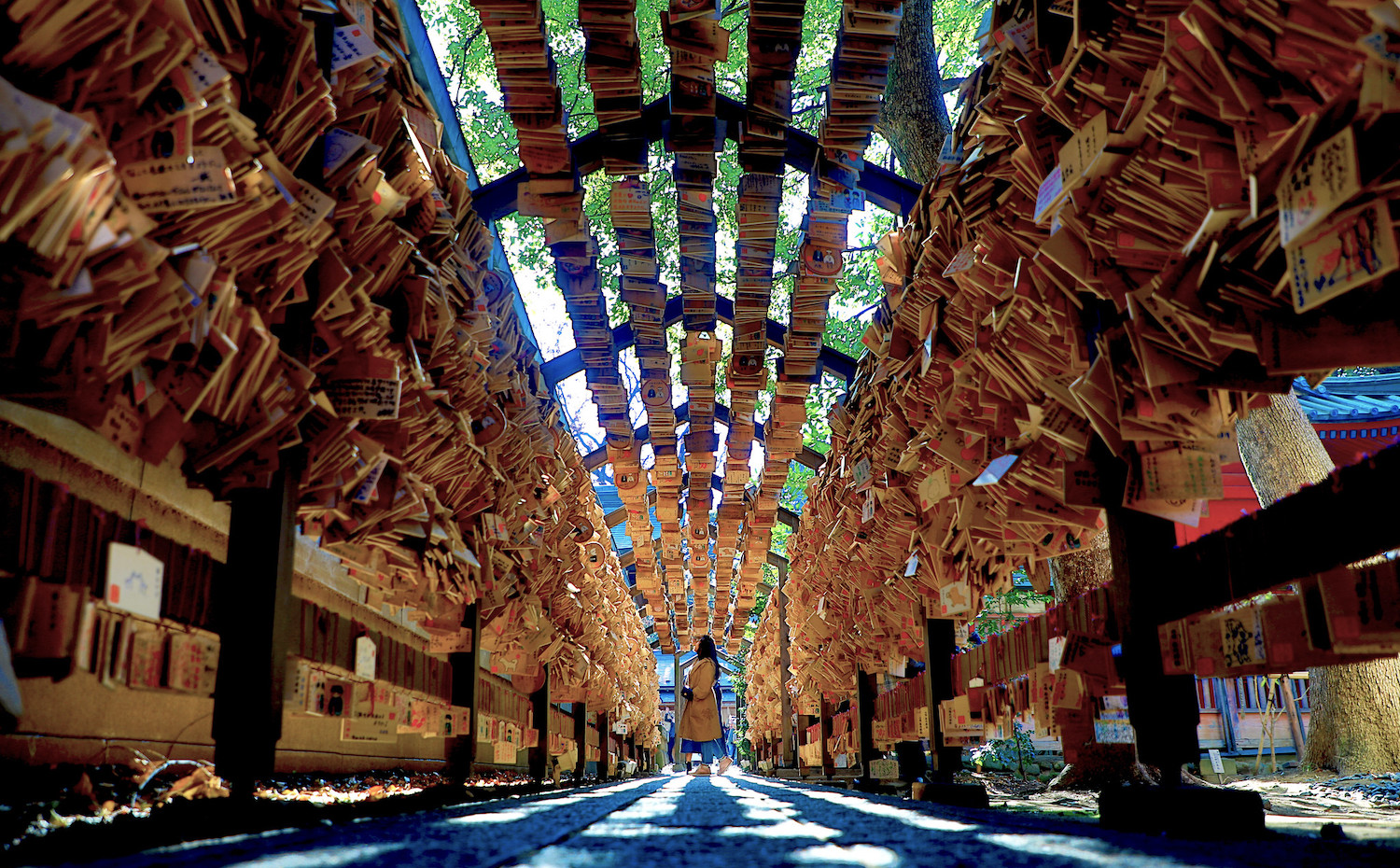
Credit: flickr/TIB1213D (https://www.flickr.com/photos/148623644@N03/)
Entering the shrine can be a calming experience. To enter the serene sanctuary visitors must pass a 15-metre high torii gate. Once inside you can inscribe your wishes on a wooden plaque. At the back of the shrine there are two large zelkova trees, believed to be over 600 years old. Around these trees there is a stone path built, allowing visitors to walk around the trees in a number 8 shape, which is thought to gain a special power.
Hikawa Shrine is also the location of an annual 2-day festival held on the third weekend of every October, where many beautifully designed floats carrying specially crafted dolls are displayed. The festival dates back over 350 years and is an important part of the local culture.
Address: 350-0052 Saitama, Kawagoe, Miyashitamachi, 2 Chome−11−3
Opening Hours: 09:00-17:00
Conclusion
As you can see there are many great reasons to visit this charming and traditional town rich in culture and history. Only a short train ride from Tokyo, it is a great excuse to get out of the city and explore a different part of Japan you may not be familiar with. I am sure it is a place you will love visiting leaving you with many great memories.
Be sure to follow us on Facebook, Instagram, Twitter, and Pinterest for more fun stuff! See you again next time!

Alex Coles
Alex is a graduate of photography from London. He has a strong interest in visual arts and culture. Alex is half Japanese and has a great knowledge of Japan, having spent several years living there, visiting many parts of the country.

